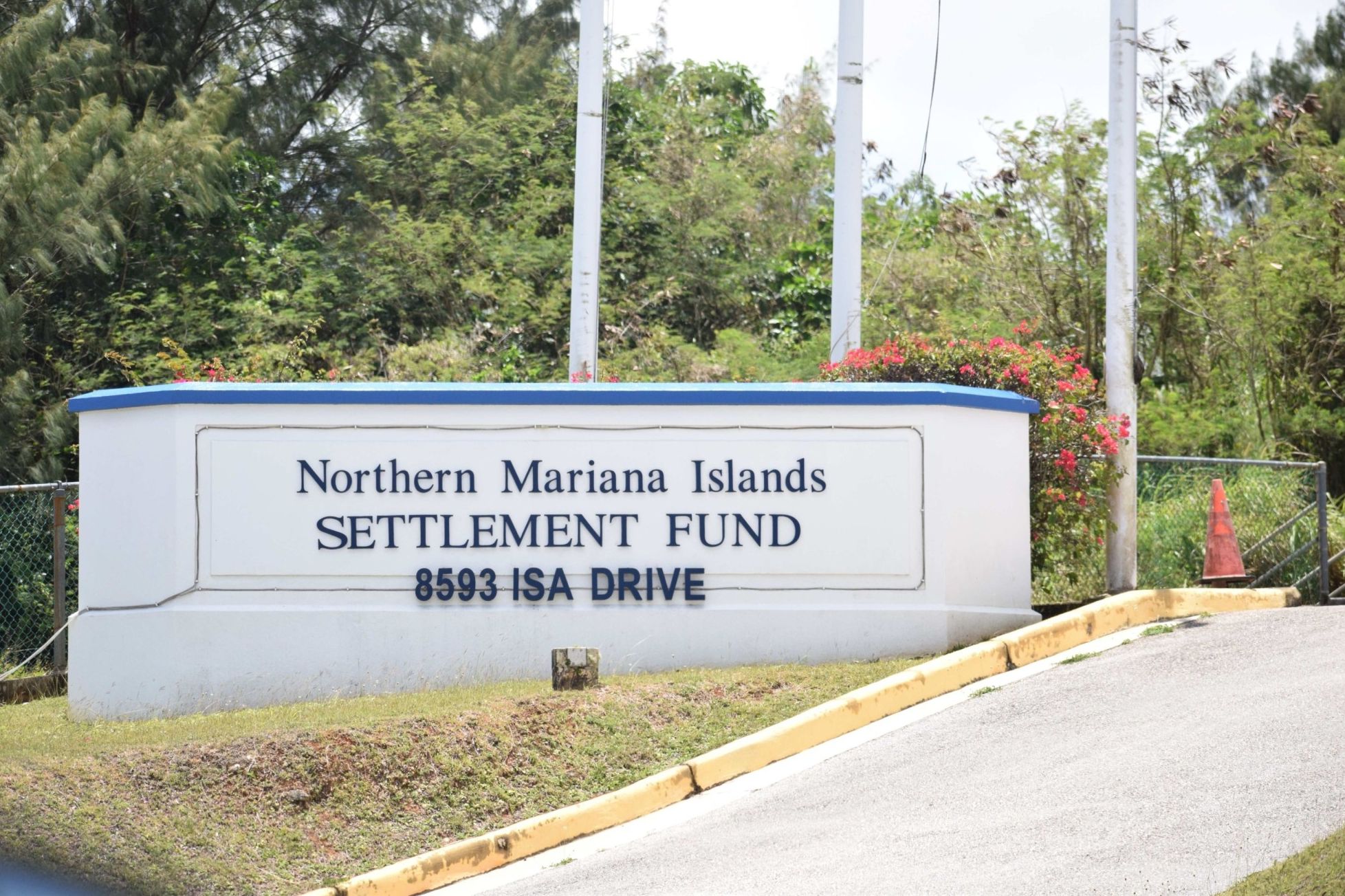
Shelters built by homeless people are seen in a stairwell on Wednesday, Feb. 14, 2024, in Hagåtña, Guam.
HAGÅTÑA (The Guam Daily Post) — The Department of Public Works on Thursday told the Island Beautification Task Force that the department’s workers have seen an uptick of abandoned vehicles and homeless encampments in derelict buildings.
People traveling on Guam roads may have seen a number of abandoned vehicles on the side of roadways and village streets, DPW Director Vince Arriola said, and it hasn’t gone unnoticed.
“We’re seeing another increase, a wave, if you will, on the easements on the sides of the roads. For now, because it’s certainly a safety hazard, we pick them up and have them staged at the parking lot here at DPW,” Arriola said. “Our staff and crews and equipment are out there to make sure they are cleared.”
The proper way to dispose of a vehicle is through the vehicle disposal program handled by village mayors, he said.
“If the people could just contact your village mayor if you have an abandoned vehicle, and you need to dispose of it. There’s money, there’s a process, at least until we get to the bigger picture of getting the vehicles off island. But to leave it on the side of the road, it really becomes a safety hazard for the rest of the motorists, pedestrians and bicyclists,” Arriola said.
Removing abandoned vehicles from the island’s streets is only half the battle, according to a village mayor.
Sinajana Mayor Robert Hofmann said the Mayors’ Council of Guam is concerned that the funding for programs such as vehicle disposal is being drained by other costs, including disposing of trash left inside abandoned vehicles.
“It involves us doing the assessment, physically tagging it, being there with the contractor, removing anything that falls out, gets crushed, broken, whatever else like that, collecting that and disposing that on our own outside. (Angel Sablan) can attest to how much debris is involved in removing a car because … you’ll never find a car that’s just a car. You’ll find a car with laundry in it and broken furniture, and then we get stuck with that,” Hofmann said.
Sablan, former MCOG executive director and current Department of Parks and Recreation director, attested to Hofmann’s statements, adding that he also has seen an uptick in abandoned vehicles at or near island parks and bus stops.
He noted that DPR is challenged because it does not have a budget to address abandoned vehicles.
“I don’t have any recycling money. And maybe that’s one of the things we have to look into is also appropriate or allot to DPR a certain funding, so, whenever we see these vehicles in the parks or whatever next to bus stops, that we don’t have to wait for the mayor,” Sablan said.
He said the funding was necessary as mayors “would tell me, ‘Oh, that’s your jurisdiction.’”
Sablan noted that the challenge in removing abandoned vehicles is that more turn up in areas that have been cleared.
“(On) Wusstig Road, we have six cars that were put there the day after (the) Yigo (mayor’s office) picked up the cars that were there, now they’re upside-down. I don’t know how,” he said. “Then, like Mayor Hofmann said, these cars are full of trash. Everything, including the kitchen sink, are in those cars and that’s another work to do is to take those trash because the contractor will not accept (a) vehicle with any of this stuff inside.”
Another unsightly issue the IBTF is tackling is the profusion of derelict buildings scattered throughout the island.
Arriola reported on Thursday that the derelict building program had cleared three areas.
“One in Yigo, one in Yona and one in Tamuning, where we had to, unfortunately, we had homeless encampments in three separate buildings, and we were able to clear those buildings,” Arriola said.
The building owners were cited previously, according to Arriola, but they needed the assistance of DPW to “move the homeless out.”
“That’s another thing that’s happening, is we have derelict buildings. We have abandoned buildings and once the homeless see them, they see fit to make their encampment, so to speak. So, we are really working closely with … two big hotels down in Tumon that we need to work with the (Guam Visitors Bureau) on that because we cited one of them. This was, I believe, the old Sheraton. I believe we got ahold of the owners … and that’s starting to really become a blight in the Tumon district area,” Arriola said.
DPW will work with GVB and the owners to come to a resolution on how to proceed with the building, he said.
Arriola said the other hotel building DPW wants to address is the old Pacific Star Hotel, also in Tumon.
“It’s not at the derelict stage, but we need to start having talks with the owner to see exactly what he or she or what they plan to do with that building. It’s one of the larger hotels, and I’m sure the owners are trying to figure out what to do with it, but we need to get into conversations with them to make sure it doesn’t become derelict,” Arriola said.
In Hagåtña, DPW is working to address a homeless encampment in the Radhi’s Fabric Shop building. Arriola noted that the department has had issues with unauthorized individuals in the building previously.
“The inspector was there last week and there’s…a number of homeless at the very top floor. So, we need to do what we did with the other buildings. We’ll get them out,” Arriola said. “We’ve already declared it a derelict building, but we are going to work with the family to get the whole site encased.”
Arriola said the property will be hardened so that no one can enter the premises or the parking area of the building.











